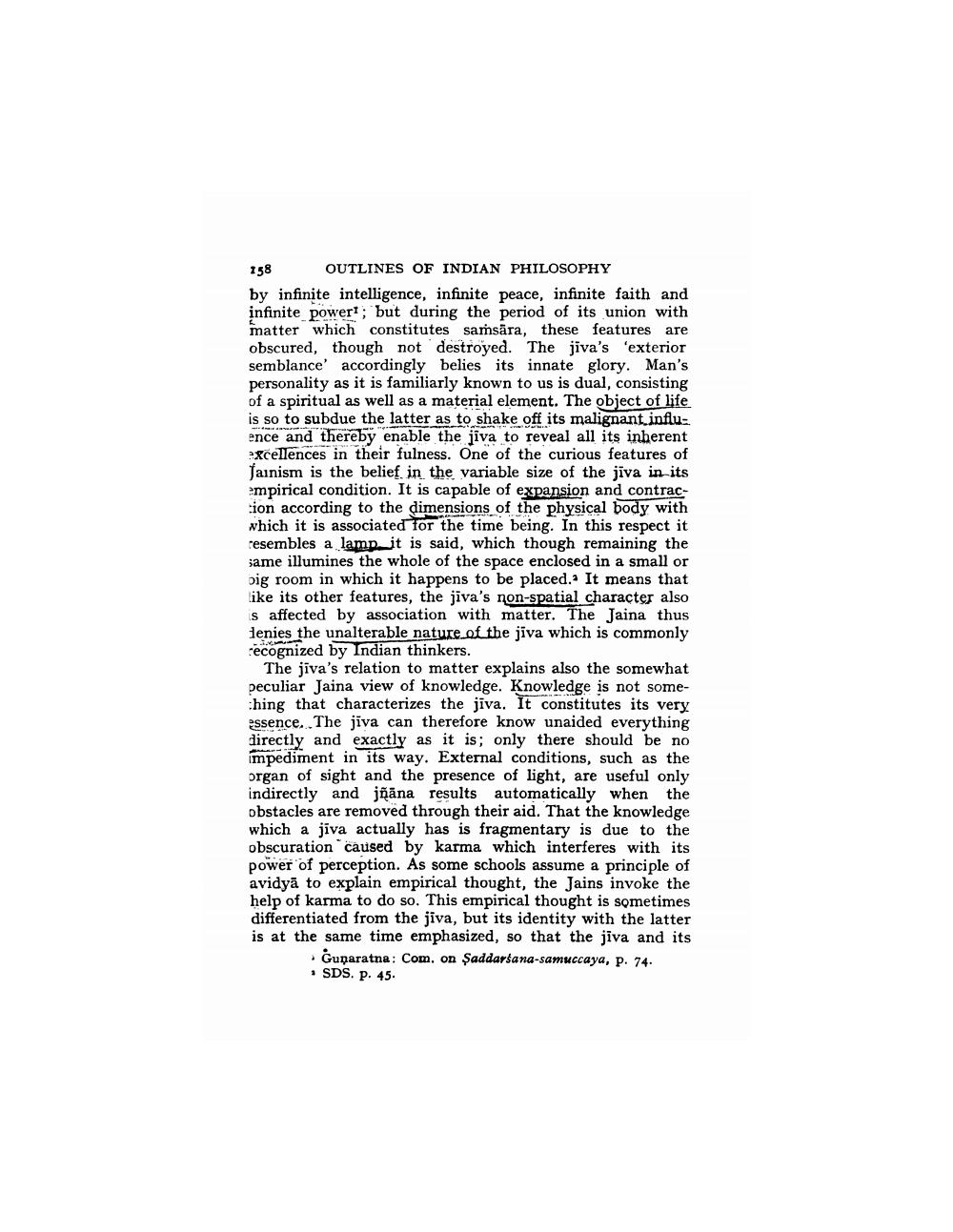________________
158 OUTLINES OF INDIAN PHILOSOPHY by infinite intelligence, infinite peace, infinite faith and infinite powert; but during the period of its union with matter which constitutes samsāra, these features are obscured, though not destroyed. The jiva's 'exterior semblance' accordingly belies its innate glory. Man's personality as it is familiarly known to us is dual, consisting of a spiritual as well as a material element. The object of life is so to subdue the latter as to shake off its malignant influence and thereby enable the jiva to reveal all its inherent Excellences in their fulness. One of the curious features of Jainism is the belief in the variable size of the jiva in its empirical condition. It is capable of expansion and contraction according to the dimensions of the physical body with which it is associated for the time being. In this respect it resembles a lamp it is said, which though remaining the jame illumines the whole of the space enclosed in a small or pig room in which it happens to be placed. It means that like its other features, the jiva's non-spatial character also is affected by association with matter. The Jaina thus denies the unalterable nature of the jiva which is commonly cecognized by Indian thinkers.
The jiva's relation to matter explains also the somewhat peculiar Jaina view of knowledge. Knowledge is not somehing that characterizes the jiva. It constitutes its very essence. The jīva can therefore know unaided everything directly and exactly as it is; only there should be no impediment in its way. External conditions, such as the organ of sight and the presence of light, are useful only indirectly and jñāna results automatically when the obstacles are removed through their aid. That the knowledge which a jiva actually has is fragmentary is due to the obscuration caused by karma which interferes with its power of perception. As some schools assume a principle of avidyā to explain empirical thought, the Jains invoke the help of karma to do so. This empirical thought is sometimes differentiated from the jiva, but its identity with the latter is at the same time emphasized, so that the jiva and its
Gunaratne: Com. on Saddarsana-samuccaya, p. 74. · SDS. p. 45.




